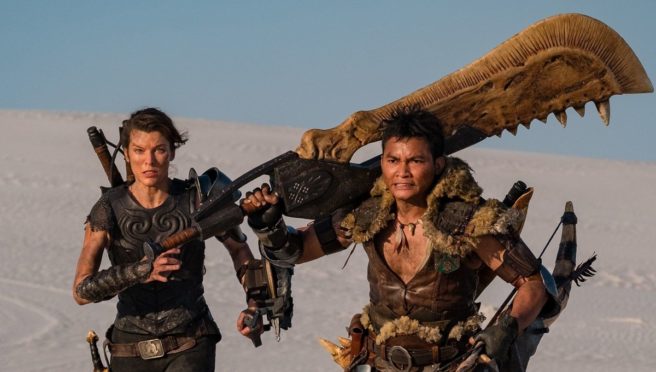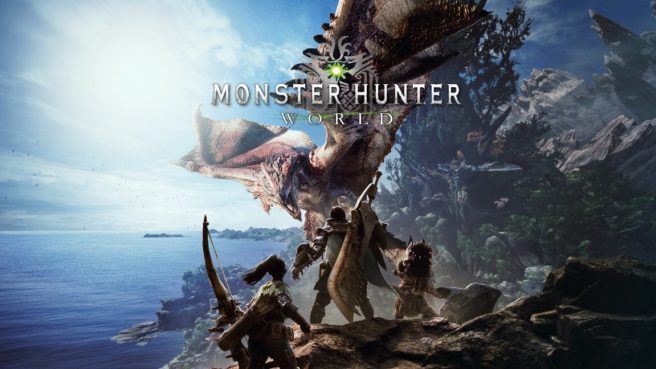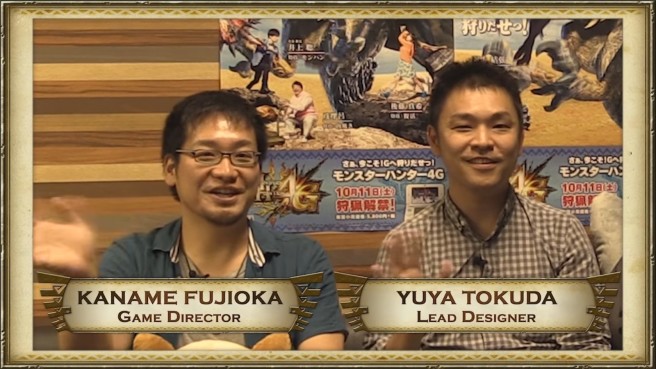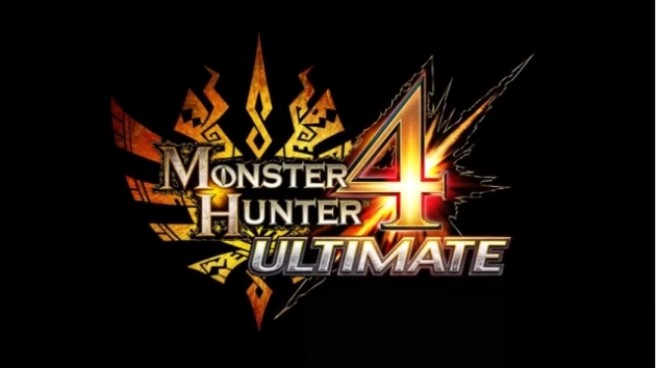Monster Hunter dev comments on the upcoming movie, says “the final result should probably satisfy players”
Posted on 6 years ago by Brian(@NE_Brian) in General Nintendo, News | 0 comments
Monster Hunter has a brand new movie coming next year. Although we’ve yet to see much from it, a trailer did leak online not too long ago.
In an interview with Bahamut, long-time Monster Hunter developer Kaname Fujioka, who has directed the series and served other roles, was asked about the film. He said that the team “did discuss with the director and CG production team many times” and ultimately believes “the final result should probably satisfy players.” Fujioka also noted how he and other staffers at Capcom feel the director’s “respect” for the IP.
More: Capcom, interview, Kaname Fujioka, Monster Hunter, movie
Monster Hunter World devs on the lack of a Switch version
Posted on 7 years ago by Brian(@NE_Brian) in News, Switch | 605 Comments
In the past, when asked about why Monster Hunter World isn’t appearing on Switch, Capcom has been a bit cagey. IGN finally managed to get a concrete answer out of directors Kaname Fujioka and Yuya Tokuda in a new interview.
Fujioka and Tokuda explained that one reason for the lack of Switch plans is due to the game’s lengthy development. Capcom originally started on the project four years ago, and Nintendo’s newest console wasn’t around at that time. Also explained is that, “for every title we decide what the best fit for hardware is for the concept.”
Fujioka and Tokuda’s full words:
More: Capcom, interview, Kaname Fujioka, Monster Hunter World, top, Yuya Tokuda
Monster Hunter 4 Ultimate – interview with game directors
Posted on 9 years ago by Brian(@NE_Brian) in 3DS, Videos | 0 comments
Capcom put up an official interview with Monster Hunter 4 Ultimate directors Kaname Fujioka and Yuya Tokuda. Watch it in full below.
Questions asked in the video include (with times during the video):
0:42 Could you give us an overview of the monster design process?
1:43 What was the most challenging monster to develop?
3:00 Which returning monster was the most challenging to bring to the MH4U gameplay engine?
4:09 What was the most fun monster to design?
5:33 Which was the most challenging weapon to balance in MH4U?
7:18 How was the process of balancing the Life Honing feature?
9:07 How did you come up with the Charge Blade’s Guard Point mechanic?
11:07 How did you come up with the specific features to Seregios’s weapons (Auto-Sharpening, Auto-Reload)?
12:47 How did you settle on Mounting as the core feature of MH4U?
And questions that aren’t specific to the game:
14:51 Why is Monoblos only available for hunting in Single-Player quests?
16:15 What is the language the Diva uses while singing?
17:48 How is a flagship monster created, and why is that a necessary feature of the game?
Monster Hunter 4 Ultimate devs on the item drop rate, Tetsuya Nomura armor set, more
Posted on 10 years ago by Brian(@NE_Brian) in 3DS, News | 0 comments
Siliconera has a new interview up with a couple of the developers behind Monster Hunter 4 Ultimate. The site spoke with executive director Kaname Fujioka as well as executive producer Ryozo Tsujimoto. Between the two, they commented on topics like Monster Hunter 4 Ultimate’s item drop rate, how the Tetsuya Nomura armor set collaboration came about, and more.
We’ve gathered up some excerpts from the interview below. The full discussion can be found here.
Capcom animates monsters in the Monster Hunter games by hand
Posted on 10 years ago by Brian(@NE_Brian) in 3DS, General Nintendo, News | 2 Comments
Did you know that the monsters in Capcom’s Monster Hunter games feature animations that are done by hand? The only exceptions are certain cut-scenes where a small amount of motion capture is involved.. But for the most part, Monster Hunter 4 Ultimate director Kaname Fujioka informed Siliconera that “animators create monsters’ motions by hand as it requires more careful craftsmanship as they talk with the game designers.”
He said:
“For cutscenes, there are cases where we utilize motion capture techniques for monsters which might have similar skeletal structure to human beings such as the Palicoes. However, in most cases, our animators create monsters’ motions by hand as it requires more careful craftsmanship as they talk with the game designers. It’s very important that the motion and the game mechanics are properly intertwined for the gameplay. When we try to showcase a monster’s personality and expressions, we reference frameworks from real life beings and habitats to make them believable. We visit zoos and aquariums and also watch documentary films for reference material.”
It’s necessary for Capcom to nail the animation of monsters since the series is about pattern recognition. The way monsters react give players clues about how they should proceed.
“It’s important for us that players understand what kind of tactics they need to use. We give clues to players on how a monster may act based on its various expressions, and emotional and behavioural states (such as alarmed, enraged, exhausted, etc.) We plan for the monster’s behaviour first, so we keep in mind things such as distance between the player and the monster, logic behind the monster’s behaviours, and so on.”
More: Capcom, interview, Kaname Fujioka
Video: Ryozo Tsujimoto, Kaname Fujioka talk all about Monster Hunter 4 Ultimate
Posted on 10 years ago by Brian(@NE_Brian) in 3DS, Videos | 0 comments
Monster Hunter 4 Ultimate devs on lack of Wii U version, collaborations, support from Nintendo, and more
Posted on 10 years ago by Brian(@NE_Brian) in 3DS, New Nintendo 3DS, News, Wii U | 23 Comments
Another interview with Monster Hunter 4 Ultimate executive producer Ryozo Tsujimoto and creative director Kaname Fujioka has appeared, this time coming from Nintendo Life. The two developers tackled various topics such as the lack of a Wii U version, collaborations in the game, support received from Nintendo, and more. Check out some excerpts from the new interview below.
Monster Hunter 4 Ultimate director on why the game was made for 3DS
Posted on 10 years ago by Brian(@NE_Brian) in 3DS, News | 21 Comments
Monster Hunter 4 Ultimate is for 3DS – and only 3DS. Unlike Monster Hunter 3 Ultimate, there is no console version to speak of.
In an interview with USgamer, Monster Hunter 4 Ultimate director Kaname Fujioka spoke about the decision to create the title for Nintendo’s portable. Here’s what was shared:
So, for this title in particular, we focused on producing one SKU so everyone could play together. The 3DS was basically the best bet because, that way, you can play online or take your 3DS with you and play locally. You’re not chained to one TV or anything like that. For what we wanted to do with this game—basically, let people play together however they want—[portable] was really the best choice.
Monster Hunter 4 Ultimate director on the new Felyne jumping attacks
Posted on 10 years ago by Brian(@NE_Brian) in 3DS, News | 0 comments
Capcom showed a new trailer for Monster Hunter 4 Ultimate in a Japanese Nintendo Direct held last month. The video showed a new feature in which Felyne companions can launch hunters up into the air to attack monsters.
Director Kaname Fujioka has since explained how it works. He told Siliconera:
“The way the system with the Felynes works is quite different from what we had in [Monster Hunter 3]. When you bring your Felyne companions along with you in 4, they have stats, just like any other character would.”
“And what happens is, when you have other players who bring their own Felynes along, depending on how the stats match up, they’ll end up performing different things to help you out. They can lay traps, they can notify you when enemies are in a weakened state. It depends on what kind of Felynes you have, and how they combine with the other ones during the quest.”
“One of the new things we added specifically for 4 Ultimate over 4 is that, one of the things these Felynes can do now is launch the player up into the air. And that does behave essentially the same way as a jump attack. Same damage, same animation. It allows you to do it in places you couldn’t normally perform a jumping attack.”
Monster Hunter 4 Ultimate on the Bowgun – why Tri’s customization was removed, special “element” teased
Posted on 10 years ago by Brian(@NE_Brian) in 3DS, News | 0 comments
Monster Hunter Tri allowed players to mix and match three different parts of the Bowgun weapon. However, this feature was removed in Monster Hunter 4 Ultimate.
Explaining why the team decided to cut the functionality, director Kaname Fujioka told Siliconera:
“In Tri, we experimented with this system where you could mix and match these Bowgun parts. The problem with that was that it got really, really complicated. When it came time to make a new iteration, we looked at that system and thought it would be too difficult to expand upon without making it even more complicated for us to make and users to understand. So, we did make an effort to simplify it a little bit.”
“Now, we don’t want Bowgun users to feel [the system] is too simple or uninteresting, so there is a certain level of customization and methods of making Bowguns to suit your playstyle, with the way you can remove the Limiter.”
Fujioka did at least have an interesting tease to share for fans of the Bowgun:



